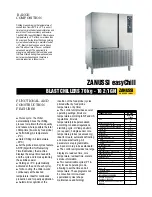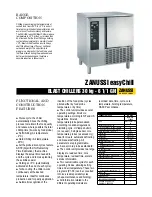
ARTC-SVX001B-EN
49
N
NO
OT
TIIC
CE
E
C
Co
om
mp
po
on
ne
en
ntt D
Da
am
ma
ag
ge
e!!
F
Fa
aiillu
urre
e tto
o ffo
ollllo
ow
w iin
nssttrru
uccttiio
on
nss cco
ou
ulld
d d
da
am
ma
ag
ge
e
sse
en
nssiittiiv
ve
e e
elle
eccttrro
on
niicc cco
om
mp
po
on
ne
en
nttss b
be
ey
yo
on
nd
d rre
ep
pa
aiirr..
T
To
o p
prre
ev
ve
en
ntt a
arrcciin
ng
g o
orr ssu
urrg
ge
ess o
off e
elle
eccttrriicca
all ccu
urrrre
en
ntt,,
d
do
o n
no
ott u
usse
e w
wiirre
ess o
orr cca
ab
blle
ess tto
o jju
um
mp
p cco
om
mp
po
on
ne
en
nttss o
orr
b
by
yp
pa
assss tth
he
e m
ma
an
nu
uffa
accttu
urre
err''ss ssa
affe
etty
y ssy
ysstte
em
mss..
Federal Clean Air Act
Responsible refrigerant practices are important to the
environment, our customers, and the air conditioning
industry. All technicians who handle refrigerants must
be properly certified. The Federal Clean Air Act
prescribes procedures for handling, reclaiming,
recovering, and recycling of refrigerants and the
equipment that must be used in maintenance
procedures involving potential leakage of HVAC
refrigerants. State and local governments may have
additional requirements that must be followed to
responsibly handle HVAC refrigerants.
Inspection and Maintenance
Schedule
Proactive measures should be taken to prevent
potential problems with the chillers. These include
maintaining a operational log and conducting weekly,
quarterly, and annual inspections of the chiller. See
following table.
Daily
A daily visual inspection can reveal obvious problems.
Keep notes of the chiller performance:
•
Log pressures and temperatures.
•
Visually inspect of the unit.
Table 10.
Recommended chiller service intervals
Task
Frequency
Visually inspect the chiller
Daily
Log pressure and temperatures
Daily
Inspect touchscreen interface panel for alarm history
Weekly
Clean strainers on the inlet water pipe
Monthly
Check the compressor oil level sight glass
Monthly
Confirm the glycol concentration
Monthly
Confirm the refrigeration pressures
Monthly
Check the refrigeration liquid line sight glass
Monthly
Inspect refrigerant pressures and temperature set points
Quarterly
Inspect superheat (10 °F to 12 °F [5°C to 6°C]) and sub-cooling temperatures (10°F to 15°F [5°C to 8°C])
Quarterly
Inspect the evaporator entering and leaving evaporator temperature
Quarterly
Collect water/glycol mixture sample for analysis
Quarterly
Inspect crankcase heaters
Quarterly
Inspect piping for signs of leaks
Quarterly
Inspect refrigerant piping for oil or refrigerant leaks
Quarterly
Observe refrigeration operating pressures
Quarterly
Confirm motor amperage draw and voltage
Quarterly
Confirm chiller superheat and sub-cooling
Quarterly
Check for worn or burned contactors
Quarterly
Inspect all electrical connections and fuses
Annually
Inspect each compressor for refrigerant pressures, overheating, oil leaks
Annually
Inspect compressor terminals for pitting, corrosion, and loose connections
Annually
Inspect compressor oil level
Annually
















































